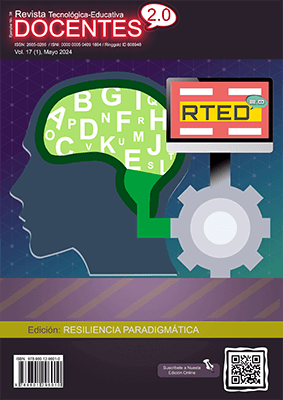Feasibility Analysis for the Creation of a Production and Marketing Company for Yacon Chips
 DOI:
https://doi.org/10.37843/rted.v17i1.483
DOI:
https://doi.org/10.37843/rted.v17i1.483
Main Article Content
Abstract
Yacon is a tuber cultivated in America in the warm and temperate Andean regions, in countries such as Peru and Bolivia, for more than a millennium. Yacon has been considered a superfood for its properties, its satiety effect, its richness in micronutrients, highlighting its sweet taste, and being low in calories at the same time. For this reason and by means of this project, we are trying to promote a company that produces and commercializes Yacon products. For this task, the study was carried out in the 18th district of the city of La Paz, Bolivia, and could expand to other population sectors and adapt in the best way to the target place. The project aims to start with healthy chips as substitutes for other chips and snacks with low nutritional value, and it also seeks to attract consumers who are interested in improving their appearance and health, people with diabetes, overweight, osteoporosis, cancer, and fitness problems, as well as ordinary people looking for healthier consumption alternatives. The project will be developed by using skillful administrative strategies to manage the company, with a strong focus on marketing. It is also intended to offer quality flakes that are attractive and have a pleasant taste; and at the same time, to promote the development, through sustainable growth, of the producing communities, which have a low socioeconomic level and limited development.
Downloads
Metrics
Article Details

This work is licensed under a Creative Commons Attribution-NonCommercial-NoDerivatives 4.0 International License.
Those authors who have publications in our journal accept the following terms:
- When a work is accepted for publication, the author retains rights of reproduction, distribution of his/her article for exploitation in all countries of the world in the format provided by our magazine and any other magnetic medium, optical, and digital.
- Authors will retain their copyright and guarantee the journal the right first to publish their work, which will be simultaneously subject to the Creative Commons Acknowledgment License (Attribution-NonCommercial-NoDerivatives 4.0 International (CC BY-NC-ND 4.0)). That allows third parties to copy and redistribute the material in any medium or format, under the following conditions: Acknowledgment - You must properly acknowledge authorship, provide a link to the license, and indicate if any changes have been made. You may do so in any reasonable way, but not in a way that suggests you have the licensor's endorsement or receive it for your use. NonCommercial - You may not use the material for a commercial purpose. NoDerivatives - If you remix, transform, or build from the material, you cannot broadcast the modified material. There are no additional restrictions - You cannot apply legal terms or technological measures that legally restrict you from doing what the license allows.
- Authors may adopt other non-exclusive license agreements to distribute the published version of the work (e.g., deposit it in an institutional archive or publish it in a monographic volume) provided that the initial publication in this journal is indicated.
- Authors are allowed and recommended to disseminate their work through the Internet (e.g., in institutional telematic archives, repositories, libraries, or their website), producing exciting exchanges and increasing the published work's citations.
- Request of withdrawal an article has to be done in writing by the author to the Editor, becoming effective after a written response from the Editor. For this purpose, the author or authors will send correspondence via e-mail: [email protected].
- The author will not receive financial compensation for the publication of his work.
- All Docentes 2.0 Journal publications are under the Open Journal System (OJS) platform at: https://ojs.docentes20.com/.
References
ACyV. (2020). El Confidencial. https://n9.cl/4wh0ib.
Argente Arizón, P. (2020). MALDITA.ES. https://n9.cl/xeqyg
Avedaño, L. F. (2017). Los Tiempos. https://n9.cl/p1lnc
Delgado, R. N. (2020). Club de Escritura. https://n9.cl/ctk1o8
Equipo de redactores y equipo de editores médicos de la American Cancer Society. (2020). American Cancer Society. https://n9.cl/inb7m
Gobierno Autónomo Municipal de La Paz. (2016). Cartillas Macrodistritales del Municipio de La Paz. https://n9.cl/9yet5
Grupo Nueva Economía. (2022). Nueva Economía. https://n9.cl/gmpcl
Hernández Sampieri, R., & Torres Christian, P. (2018). Metodologia de la investigación las rutas cualitativa cuantitativa y mixta. McGraw-Hill.
Hernández Sampieri, R., & Mendoza Torres, C. P. (2018). Metodología de La Investigación Edición Las Rutas Cualitativa Cuantitativa y Mixta. MCGRAWHILL.
Huaycho et al. (2016). Conocimientos tradicionales en yacón o aricoma (Smallanthus sonchifolius) en comunidades de Mocomoco, Coroico e Irupana de La Paz. Revista de
Investigación e Innovación Agropecuaria y de Recursos Naturales, 152-165.
Institución Agrodata Perú. (2019). PerúRetail. https://n9.cl/ilku2
Martínez Duque, L. V., & Vélez Salazar, D. M. (2013). En Estudio De Factibilidad En La Implementación, Desarrollo Y Comercialización De Hojuelas De Yacón (p. 58). Universidad Tecnológica De Pereira, Facultad De Ingeniería Industrial.
Minagri/ Correo/ La República/ Agronegocios/ National Institutes of Helath/ Del Perú Biblioteca de Medicina de los EE. UU. (2020). Perú Info. https://n9.cl/380k
Mujica-Sequera. R. (2018). La gerencia del potencial humano. Docentes 2.0, https://doi.org/10.37843/rted.v6i2.71. DOI: https://doi.org/10.37843/rted.v6i2.71
Ortega, C. (s.f.). Questionpro. https://n9.cl/aqzc7k
Página 7. (2020). Página 7. https://n9.cl/hr95m
Pilar Argente, A. (2020). MALDITA.ES. https://n9.cl/xeqyg
Rajat Das Gupta, R. J. Kothadia, A. Ahmad Parray. (2023). Diabetes Epidemiology and Management. ELSEVIER, 1.
Seminario, J., Valderrama, M., & Manrique, I. (2003). El Yacón Fundamentos para el aprovechamiento de un recurso Promisorio. CIP.
Seminario et al. (2003). El Yacon Fundamentos parael aprovechamiento de un recurso promiorio. Centro Internacional de la Papa.
Smith, B. (2022). Software de Analítica & Soluciones. https://n9.cl/84nml
The Lancet. (2020). Datos Mundial. https://n9.cl/eulfx






